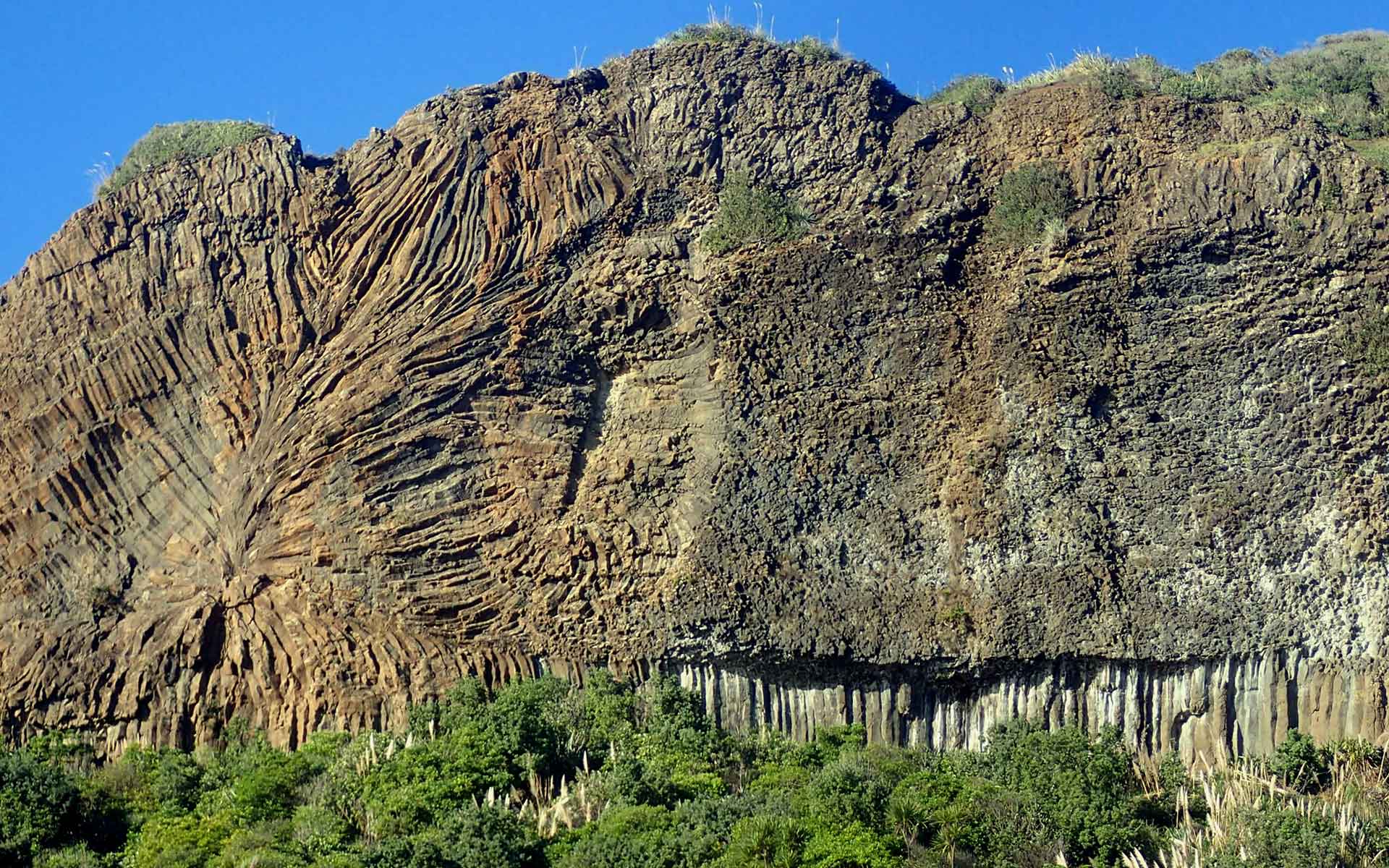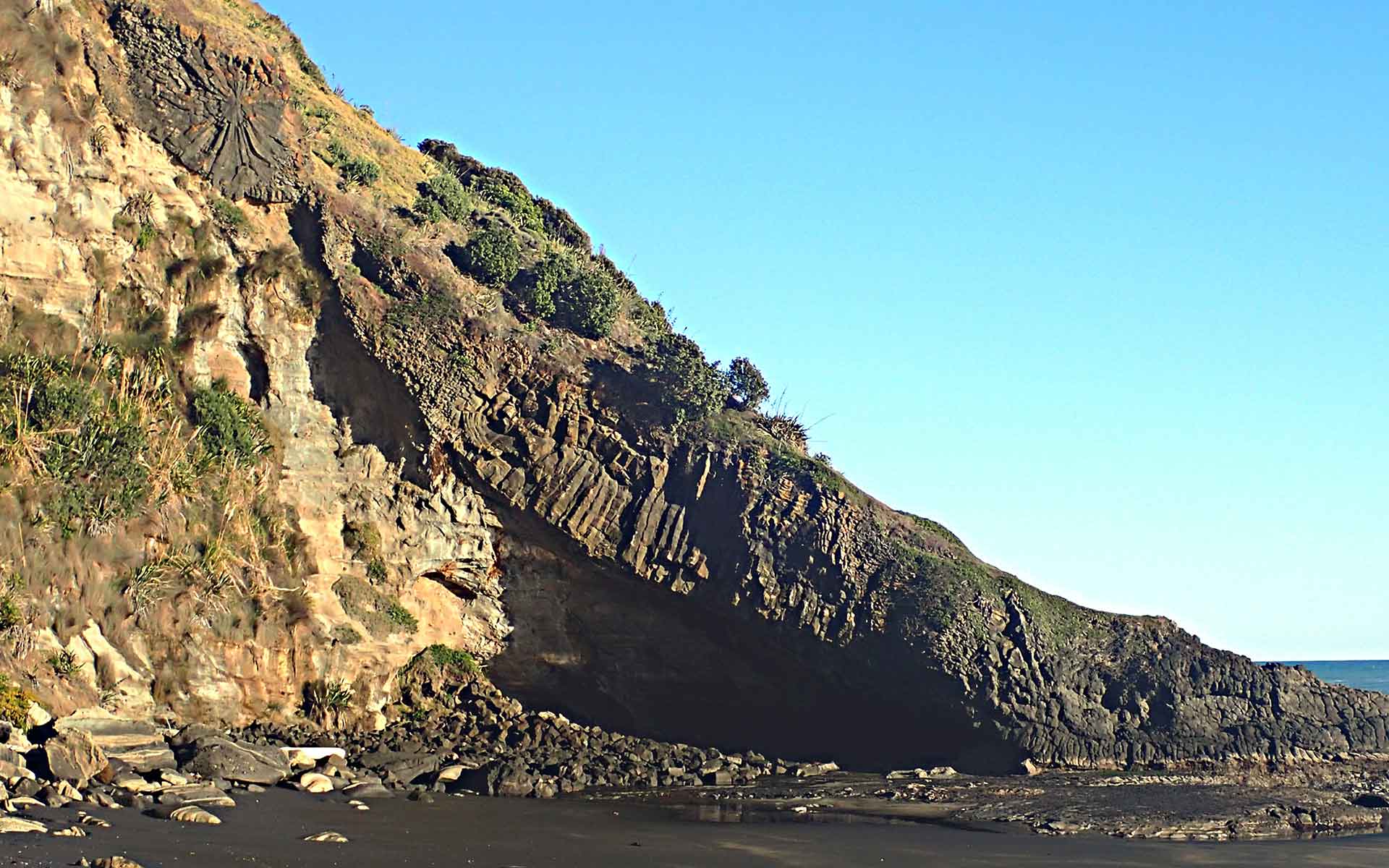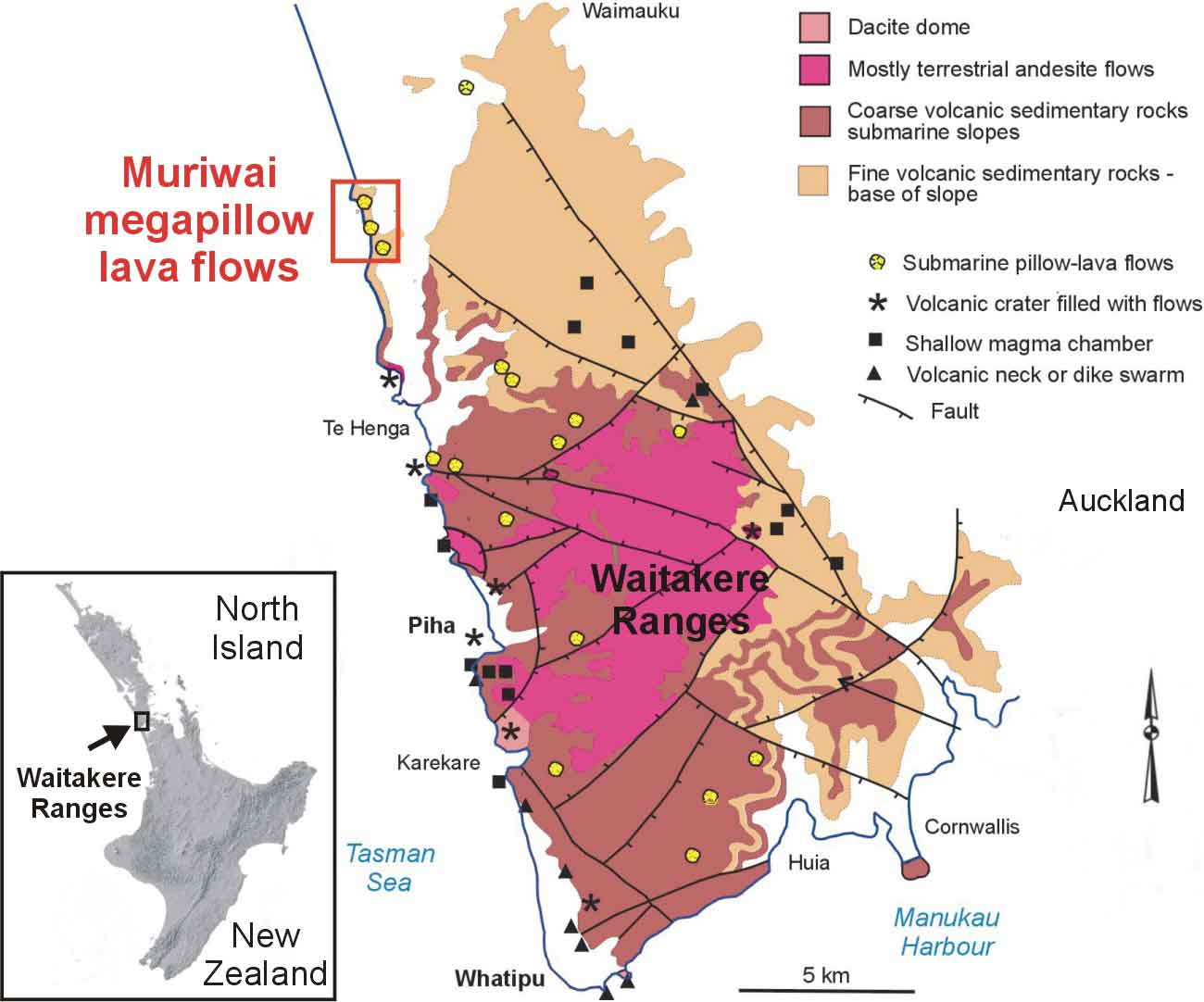
Part of the larger megapillow lava flow at Muriwai showing huge fans and rosettes of cooling columns formed as several internal feeder tubes solidified.
Geological Period
Miocene
Main geological interest
Volcanology
Stratigraphy and sedimentology
Location
Auckland, New Zealand
36°50’06”S, 174°25’39”E
Part of the larger megapillow lava flow at Muriwai showing huge fans and rosettes of cooling columns formed as several internal feeder tubes solidified.
World's largest, most complex and spectacular megapillow lava flow with internal feeding tubes with giant fans of cooling columns.
Easily accessible Muriwai pillow lavas have an international reputation as the best example anywhere of a large and complex megapillow lava flow with spectacular huge fans of cooling columns formed in the internal lava feeder tubes. Megapillow lava flows occur elsewhere (e.g. Sardinia, Spain, Tasmania), but none match the cross-sectional exposure of the larger Muriwai megapillow flow in terms of exposure, size and complexity. Exposures of dikes feeding attached pillows are extremely rare in the international literature. The three dimensional exposure of the smaller pillow lava flow with branching lobes and surface corrugations is similar to the spectacular Oman example.
- Geological description
Two basaltic andesite pillow lava flows and two dikes that feed large (3-5 meter diameter) pillow rolls along their upper edges are beautifully exposed in the 50-70-meter-high sea cliffs at Muriwai. These flows are preserved within volcaniclastic sediments that were deposited on the sea floor and in submarine canyons at lower bathyal depths (1000-2000 meters) during the early Miocene (Hayward, 1976, 2022). The larger megapillow lava flow (30 meters thick, 600 meters across) has complex internal structure with three large (up to 30 meter diameter) feeder tubes separated and surrounded by units of pillow and megapillow lava lobes. These feeder tubes of molten lava fed the front of the advancing flow. Lava, that leaked from cracks in the feeder tube skins, created a carapace of pillow lava lobes mixed with 1-3 meter-thick columnar-jointed flow sheets, that flowed out more quickly (Bear and Cas, 2007; Allen et al., 2007). The cooled and solidified tubes consist of huge fans and rosettes of polygonal columns, recording their complex cooling histories. Nearby, two separate dikes intrude the stratified sediments with large (3-5 meters) pillow rolls along their upper edges where lava was extruded into soft sediment just below the seafloor.
- Scientific research and tradition
Earliest studies by Bartrum (1930) inferred the fans formed inside spherical megapillows like nearby large pillows with feeders. Hayward (1979) reinterpreted them as internal feeding tubes inside a large pillow lava flow. Muriwai pillow lavas have interpretation panels, guidebooks and are visited by numerous international geologists, geology classes and tourists.
- Reference
Allen, S.R., Hayward, B.W. and Mathews, E.J. (2006) ‘A facies model for a submarine volcaniclastic apron: the Miocene Manukau volcanic complex, Northland, New Zealand’, ASEG Extended Abstracts, 2006(1), pp. 1–2. Available at: https://doi.org/10.1071/ASEG2006ab107.
Bartrum, J.A. (1930) ‘Pillow-Lavas and Columnar Fan-Structures at Muriwai, Auckland, New Zealand’, The Journal of Geology, 38(5), pp. 447–455.
Bear, A.N. and Cas, R.A.F. (2007) ‘The complex facies architecture and emplacement sequence of a Miocene submarine mega-pillow lava flow system, Muriwai, North Island, New Zealand’, Journal of Volcanology and Geothermal Research, 160(1), pp. 1–22. Available at: https://doi.org/10.1016/j.jvolgeores.2006.09.002.
Hayward, B.W. (1976) ‘Lower Miocene geology and sedimentary history of the Muriwai-Te Waharoa coastline, North Auckland, New Zealand’, New Zealand Journal of Geology and Geophysics, 19(5), pp. 639–662. Available at: https://doi.org/10.1080/00288306.1976.10426312.
Hayward, B.W. (1979) Ancient Undersea Volcanoes: A guide to the geological formations at Muriwai, west Auckland. Wellington: Geological Society of New Zealand ((Guidebook 3)).
Hayward, B.W. (2022) ‘Muriwai pillow lava: undersea flows with globally-rare fans of huge columnar joints’, in Mountains, Volcanoes, Coasts and Caves: Origins of Aotearoa New Zealand’s natural wonders. Auckland University Press, p. 384.
- Author(s)
Bruce W Hayward.
Geoscience Society of New Zealand.


